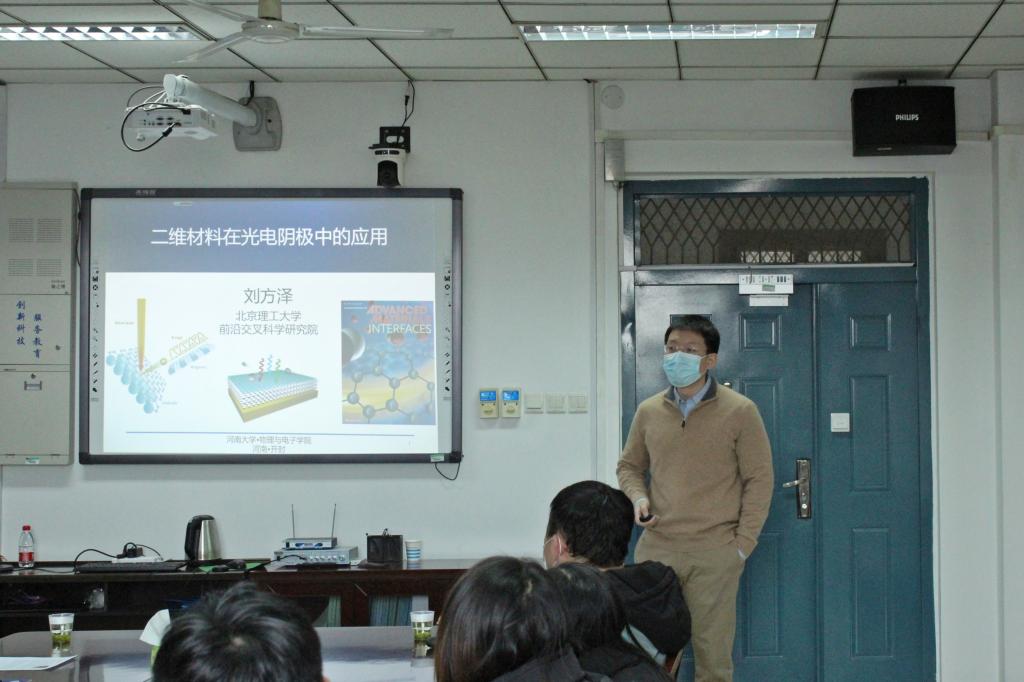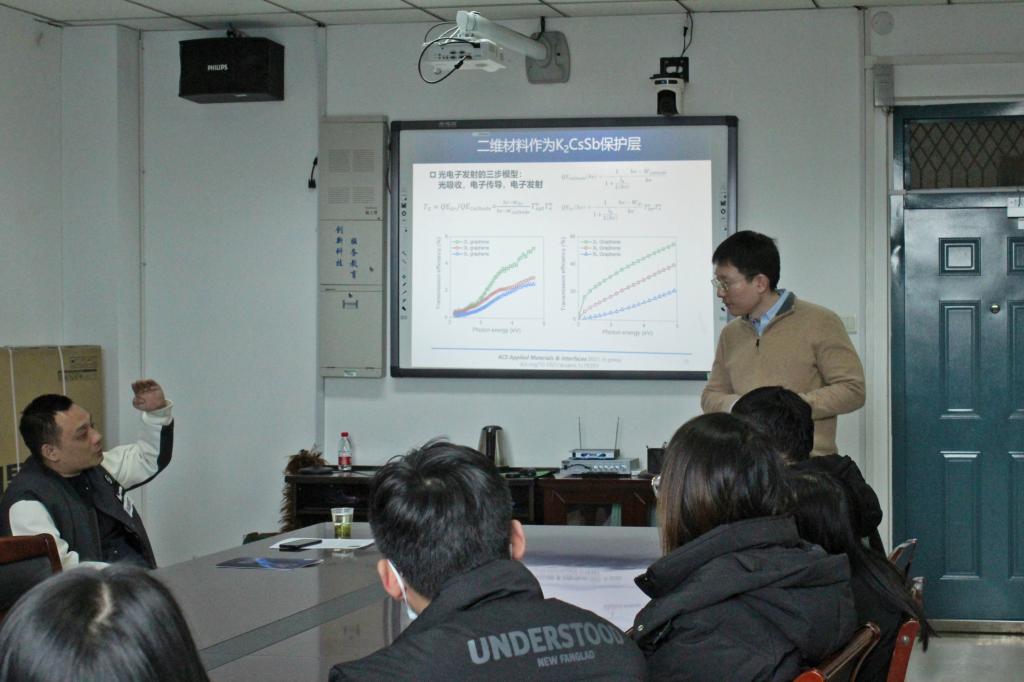

Date: December 18,2021
Locatiion: A311 SPE, Henan University
On the morning of December 18, 2021, Associate professor Liu Fangze from Beijing University of technology has delivered an academic talk entitled "The application of two-dimensional materials in photocathodes".
Associate professor Liu Fangze introduced his current researches around the above topic.
The first work is the role of two-dimensional material protective layer in improving the stability of alkali-antimonide photocathode. the direct growth of high-quality K2CsSb photocathode on suspended few-layer grapheneis realized, and it is verified that the photoelectrons emitted from K2CsSb can effectively penetrate the graphene protective layer. It is of great significance for further realizing the fully-coated photocathode. In addition, the application of perovskite films on the negative-electron-affinity photocathodes is also introduced. Single-atom Cesium layer, evaporated on the surface of perovskite films prepared by solution process, can serve as negative electron affinity materials. Compared with the traditional III-V group semiconductors, the stability of as-synthesized perovskite films has been greatly improved.
At the end of the talk, Prof. Liu have given an in-depth discussion and detailed explanation with all the teachers and students on the interesting issues.
About the reporter:
Liu Fangze, pre-appointed associate professor and doctoral supervisor of the Institute of Frontier Interdisciplinary Sciences, Beijing University of Technology. He has received the bachelor degree from Fudan University in 2009, and the doctor degree in physics from Northeast University, USA in 2015. From 2015 to 2021, he has engaged in the postdoctoral research at Los Alamos laboratory in USA, and then joined Beijing University of Technology in September 2021. His research focuses on optoelectronic devices based on two-dimensional material heterojunction, and he has published more than 40 academic papers, including the first- or corresponding author papers published in Nature Communications, Science Advances, Materials Today, ACS Nano, ACS Applied Materials & Interfaces, etc., which are cited more than 2000 times.